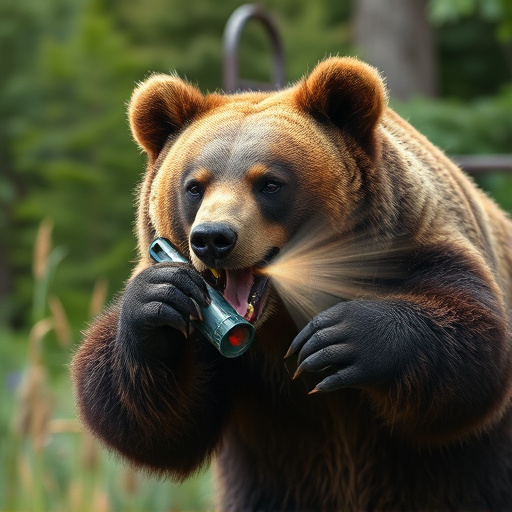Capsaicin, the active ingredient in chili peppers, effectively repels bears by stimulating nerve endings for a burning sensation. Bear repellent potency is determined by capsaicin concentration, with higher levels offering longer protection. Alaska shoppers should look for specific capsaicin measurements (in percent or ppm) and stated effectiveness distances on product labels. Understanding capsaicin concentration and environmental factors is key to maximizing bear repelment range and performance.
In Alaska, encountering bears is a reality for outdoor enthusiasts and residents alike. Understanding the maximum range and efficacy of bear repellents, particularly those containing capsicum (capsaicin), is crucial for safety. This article breaks down the science behind capsicum concentration as a key ingredient in bear deterrents. We decipher product labeling to help you choose effectively and explore factors that maximize protection in Alaska’s diverse landscapes.
- Understanding Capsaicin and Its Efficacy in Bear Repellents
- Deciphering Product Labeling: What to Look for in Alaska Bear Repellents
- Maximizing Protection: Factors Influencing the Range of Bear Repellents
Understanding Capsaicin and Its Efficacy in Bear Repellents
Capsaicin, the active ingredient commonly found in chili peppers, has gained significant attention as a potent bear repellent due to its unique properties. Bear repellents containing capsaicin work by exploiting the animal’s sensitivity to this compound, which is part of their defense mechanism against predators. When applied topically, capsaicin stimulates nerve endings, causing a burning sensation that bears find unpleasant. This natural irritant disrupts their behavior and can even lead to avoidance of treated areas.
The effectiveness of capsaicin in bear repellents heavily relies on its concentration. Higher concentrations typically provide longer-lasting protection, deterring bears for extended periods. Products with specific capsaicin concentrations, often measured in percent or parts per million (ppm), are designed to offer varying levels of defense. Understanding the capsaicin concentration in a repellent is crucial when considering its maximum range and overall performance against curious or aggressive bears.
Deciphering Product Labeling: What to Look for in Alaska Bear Repellents
When shopping for bear repellent in Alaska, understanding the product labeling is key to ensuring its effectiveness and safety. Look for specific details regarding capsaicin concentration—a measure of how hot a pepper is. The higher the concentration, generally, the better the repel power against bears. Product labels should also clearly state the distance it’s effective, as this varies by brand and formula.
Pay attention to active ingredients listed on the packaging. Some repellents use capsaicin alone, while others combine it with other natural or synthetic agents. Understanding these ingredients can help you choose a repellent suited for specific situations, be it camping in dense forests or fishing along riverside areas.
Maximizing Protection: Factors Influencing the Range of Bear Repellents
Maximizing Protection: Factors Influencing the Range of Bear Repellents
The effectiveness of a bear repellent is determined by various factors, with one of the key elements being the capsaicin concentration. Capsaicin, the active ingredient in chili peppers, creates a burning sensation and discourages bears from approaching. A higher capsaicin concentration generally translates to a greater range, as it intensifies the irritant effect on the bear’s sensitive olfactory system. This means that even at a distance, the repellent can still be effective in deterring an approaching bear.
Other factors, such as environmental conditions and the specific type of bear, also play significant roles. For instance, wind direction and speed can reduce the effective range by carrying away the repellent before it reaches the target. Additionally, different species of bears, like grizzly bears or black bears, may have varying sensitivities to capsaicin, which can further influence the repellency range. Understanding these factors is crucial for users to ensure they receive maximum protection when venturing into bear country.
In understanding the maximum range of bear repellents, especially those containing capsaicin, it’s clear that an effective product should have a substantial capsaicin concentration. Deciphering labeling and considering factors like application method and environmental conditions are key to maximizing protection. By choosing products with a proven track record and using them correctly, Alaskans can enhance their safety while outdoor activities, ensuring they stay within the guard Alaska bear repellent maximum range.
